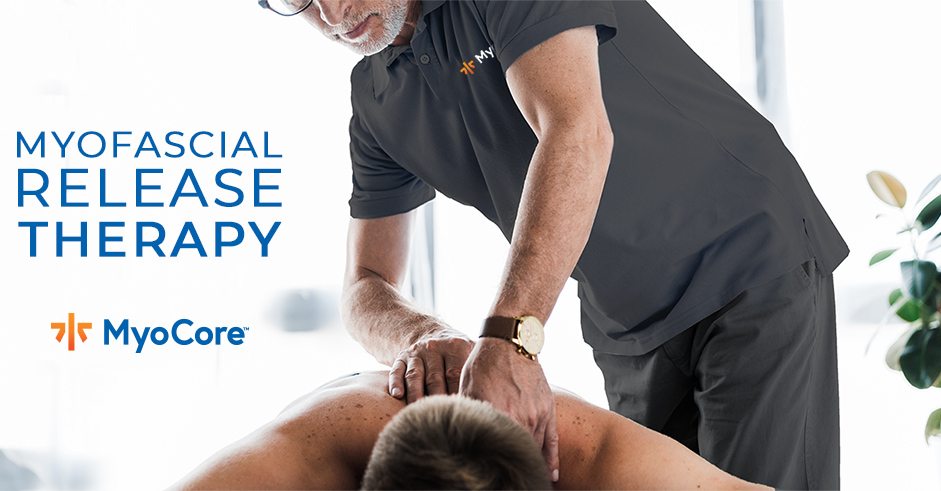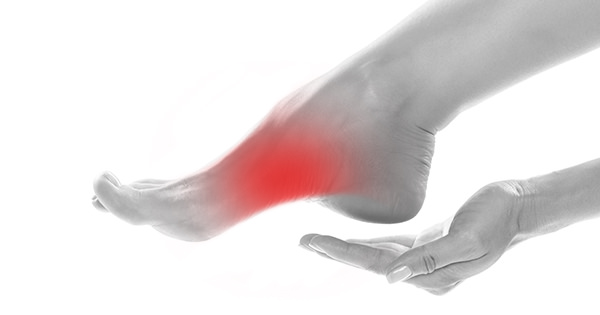
Myofascial Release Therapy: How We Use It to Treat Common Conditions
February 11, 2021
By MyoCore
How Our Chiropractors Use Myofascial Release Therapy to Treat Common Conditions
Living with acute and chronic pain is not only difficult, but it can have a negative impact on your quality of life, emotional state, and stamina to function throughout the day. When a deep ache in your low back or a persistent headache goes from mildly annoying to 100% debilitating, relief quickly becomes both necessary and vital. The good news is that many of these types of common conditions affect the musculoskeletal system, which in turn means they can be resolved with advanced deep tissue treatments, such as Myofascial release (MFR) therapy.
Our chiropractors at MyoCore use MFR therapy to alleviate pain, improve mobility, and optimize your care. They work closely with medical doctors, physical therapists, and other healthcare professionals to provide personalized treatment plans that follow best-in-class protocols. Through an integrated care approach, they are able to better understand their patients’ needs, tailor the right combination of applicable techniques, and perform hands-on, deep tissue treatments that help.
The following information gives a comprehensive understanding of what and how Myofascial release (MFR) therapy can be used to treat common conditions. If you are interested in learning more, find a chiropractor near you that performs MFR.
What is Myofascial Release (MFR) Therapy?
Myofascial release (MFR) therapy is a deep tissue manual therapy technique that focuses on releasing muscular shortness and tightness that cause pain within the body. The technique targets skeletal muscle and connective tissues that are ‘bound’ by tight fascia in the form of adhesions (dense collections of scar tissue) and trigger points (hyperirritable spots that refer pain to other areas of the body). MyoCore specialists use deep, focused manual pressure and stretching to the area to release adhesions and trigger points. This in turn relaxes and restores function to the muscle and its associated joint so that the patient experiences relief and recovery. MFR treatments address the underlying causes of dysfunction and therefore have longer lasting results.
Trigger-point therapy is a form of MFR that applies direct pressure to tense, dense knots of tissue called trigger points. By applying pressure with a finger or other instrument the trigger point eventually “releases” tension and softens so that the area regains its natural function. There are a number of variations on this technique that a skilled practitioner will be able to apply. Some examples include Active Release Technique®, which retrains the muscles’ neurological response pattern so they can relax, and the Graston Technique®.
What Common Conditions Benefit from Chiropractic Treatments Using Myofascial Release (MFR) Therapy?
Since fascia is a connective tissue that runs head to toe in a web-like system, restrictions along its pathway can produce symptoms such as pain, headaches, disease, and dysfunction. The following common conditions can be addressed with safe and effective MFR treatments.
Neck Pain and Headaches
Neck pain is commonly due to postural misalignment, trauma, or inflammation in the soft tissues surrounding the head and neck. Tension within the muscles and tendons can cause localized or referring pain, as well as acute or chronic headaches. MFR can be used to mitigate the pain by reducing the dysfunction of muscle spasms, tightness, and trigger points.
Learn how chiropractic can treat headaches.

Shoulder Pain
Causes of shoulder pain can range from mild to severe as a result of general wear and tear or complete rotary dysfunction. MFR has the ability to address particular areas that are bound and restore pain-free range of motion to the entire shoulder joint.

Back and Lower Back Pain
Acute or chronic back pain is a common form of discomfort that can be caused by injury, poor posture, or other habitual physical movements that result in regular wear and tear. By applying MFR to specific areas along the spine and addressing surrounding musculature, back pain can be alleviated or minimized in a manageable way. The goal is restore full function and mobility, which is possible using a variety of MFR techniques.
Learn how chiropractic can treat back pain.

Arm Pain, Leg Pain, and Numb Fingers
Extremity pain typically refers to anything from your arms to fingers and hips to toes (i.e., arms, wrists, fingers, ankles, toes, knees, etc.). MFR applied directly to the affected musculature and to the surrounding areas can help reduce pain, restore function, and improve the associated joint’s range of motion. Specific tools and techniques enable MFR practitioners to work with everything from small to large muscles in an effort to aid in rehabilitation.

Fibromyalgia
Fibromyalgia is a chronic disease that affects the bones and muscles. Myofascial release (MFR) therapy is key to any fibromyalgia treatment because it increases blood and lymphatic circulation, decreases sensitivity, and reduces chronic inflammation.
Learn how chiropractic can treat fibromyalgia.

Plantar Fasciitis
Plantar Fasciitis involves inflammation of a thick band of tissue that runs across the bottom of your foot and connects your heel bone to your toes. It can cause limitations and pain in a variety of activities including running, walking, jogging, and hiking. Using MFR along the sole of the foot and into the calf muscles helps reduce pain, increase fascial mobility, and improve joint function.
Learn how chiropractic can treat plantar fasciitis

Treat Common Conditions with MFR
With a commitment to educate, empower, and support our patients, MyoCore works with a team of professionals to offer a variety of MyoFascial release (MFR) therapies that are designed to aid in recovery. We are dedicated to improving the quality of life of every patient through drug-free, noninvasive treatments that relieve pain, improve joint motion, optimize muscle function, and increase flexibility. If you are experiencing any of the above common conditions and are ready to find a chiropractor near you that performs MFR please contact us. We are here to help.